We deal with air purifiers for home
There are a large number of models of air purifiers on the market with price tags ranging from 500 to 60,000 rubles, so we decided to put everything on the shelves: starting with their design and ending with the types of filters with which they can be completed.
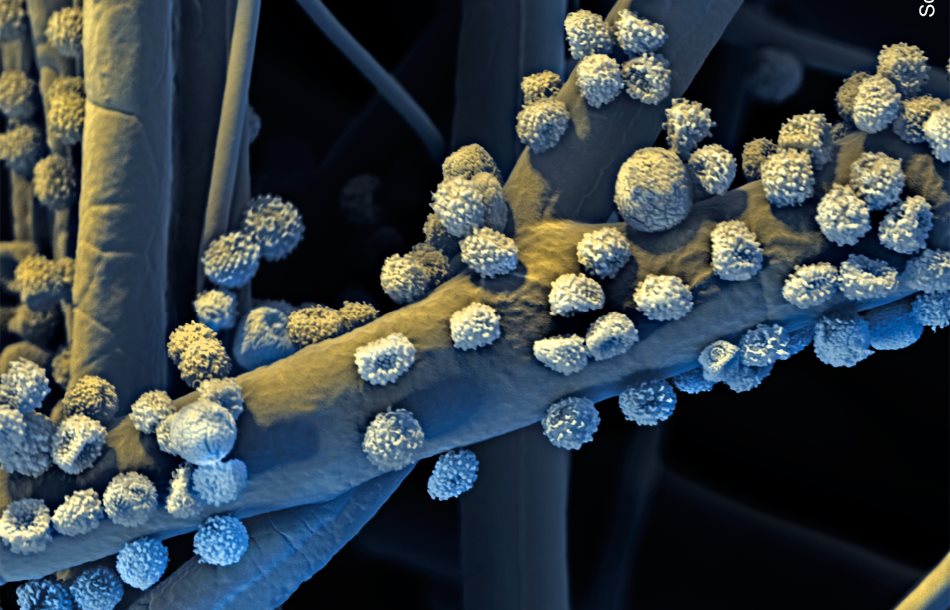
Mold spores “caught” by a HEPA filter (illustration by scientific photographer Stefan Diller)
Residents of megalopolises, where motor transport and industry determine the “ecology”, can be said about the need for air purification. There are a number of studies that talk about the role of fine particles in the development of degenerative brain disorders, including Alzheimer's and Parkinson's. According to MIT, about 200 thousand people die every year because of air pollution in the United States. The various diseases associated with seasonal allergies, allergies to dust (more precisely, to dust mites) and mold are aloof. To solve these problems and need air purifiers. However, "not all yogurts are equally beneficial." Let's start with the filter types.
Filters are of several types :
The easiest way to clean is to run air through a coarse filter and a carbon filter. Thanks to this scheme, it is possible to get rid of unpleasant odors and to remove from the air relatively large particles of contaminants such as fluff or animal hair. Such models are inexpensive, but there is no special effect from them - after all, all bacteria, allergens and small particles still remain unfiltered.
In some cases, an ultraviolet lamp is added to this cleaner, which works on the principle of quartz treatment, i.e. disinfects the air passing through it. But, alas, this solution is also a compromise, since a large stream of air cannot be effectively “processed” by ultraviolet in the short time it passes through the chamber with the radiator.
In these devices, the principle of cleaning is a little more complicated: the air is driven through the electrostatic chamber of the purifier, where contaminated particles are ionized and attracted to the plates with the opposite charge.

Electrostatic cleaner Maxwell MW-3603 PR . Productivity: 20 m3 / hour
The technology is relatively inexpensive and does not require the use of any replaceable filters. Unfortunately, such cleaners can not boast of high performance - otherwise, due to the volume of ozone formed on the plates, its concentration in the air will exceed the permissible level.
Agree, it would be strange to deal with one pollution, actively saturating the air with another. Therefore, this option is suitable for cleaning a small room, not subject to severe pollution.
From the nuclear industry came to us a technology called HEPA. Contrary to popular belief, HEPA is not a trademark or a specific manufacturer, but an abbreviation of High Efficiency Particulate Arrestance (eng: high particle retention).
HEPA filters are made of an accordion material whose fibers are interwoven in a special way. Pollution is caught in three ways:
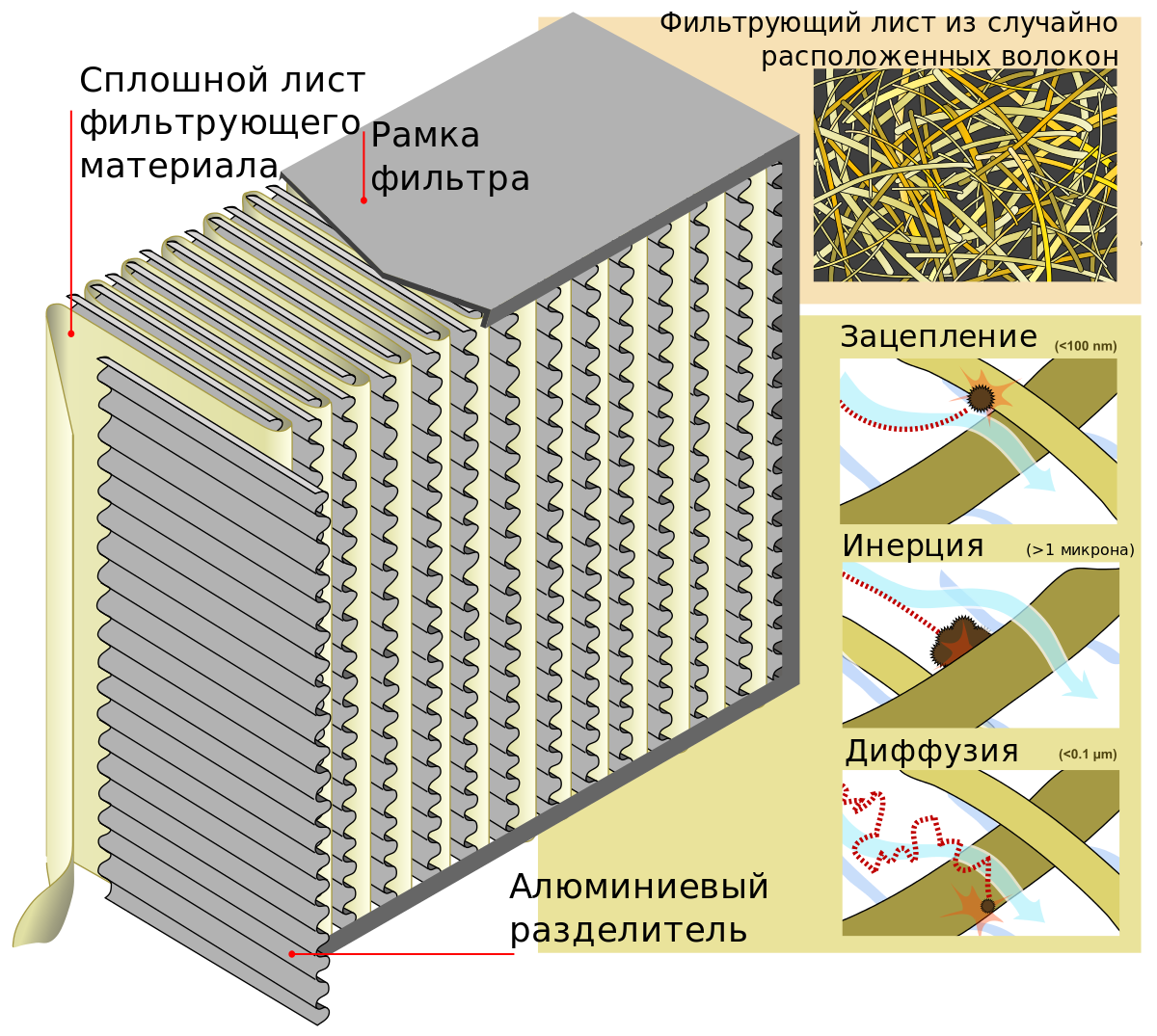
Wikipedia illustration
The HEPA standard, in its broadest sense, has several filtering classes. The most common (and cheapest) of them is E10, and it implies the efficiency of particle capture as low as 85% (in fact, only inertia). Then comes E11 (efficiency 95%) and E12 (99.5%). In fact, the filters of the group from E10 to E12 are more correct to call not HEPA, but EPA, however, standards from different countries allow manufacturers to rotate such a focus with names. However, filters starting from E12 can already be recommended for purchase, as their efficiency is already at a sufficient height.
The next class of H13 is already fair HEPA and involves the collection of 99.95% of contamination. That is, almost everything is “caught”. Therefore, in high-quality air purifiers are just such filters.

Air cleaner Bork A501 . One of the most affordable Hepa H13 filter cleaners
A further increase in class does not make sense in living conditions, because class H14 implies efficiency of 99.995%, and the next group of ULPA, starting from class U15, efficiency of 99.9995%.
No matter how effectively the HEPA filter works, it must be changed as often as the manufacturer indicates. As a rule - at least once a year. In addition, HEPA-filters are mostly disposable and cannot be simply washed with water. Given that they are not cheap, you can try to save money and at the same time solve the problem of air humidification. This class of devices like “air washing” will help.
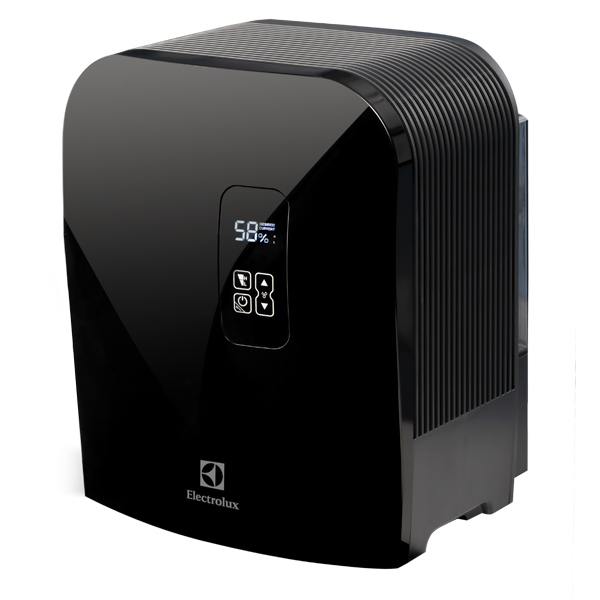
Electrolux EHAW Moisturizer Cleaner - 7510D
Cleaning in this case occurs due to the passage of the air flow through water moistened discs or a cloud of small droplets, as a result of which the air is saturated with moisture and gives off large particles of pollution. Alas, the degree of purification by such a water filter is not very high (at the level of HEPA E10, not more), however, if you need a humidifier first of all, such a decision will be justified.
A few years ago, the promising direction of the so-called photocatalytic cleaners arose. In theory, everything was pretty bright - the air through a coarse filter enters the unit with a photocatalyst (titanium oxide), where under the influence of ultraviolet radiation harmful particles are oxidized and decompose.

It is believed that such a filter fights pollen, mold spores, gaseous pollution, bacteria, viruses and the like very well. Moreover, the effectiveness of such a cleaner does not depend on the degree of contamination of the filter, since dirt does not accumulate there.
However, at the moment, the effectiveness of this type of purification is also questionable, since photocatalysis is only on the outer surface of the filter, and a significant area of air purification requires an area of several square meters with an ultraviolet intensity of at least 20 W / m 2 . These conditions are not met in any of the photocatalytic air purifiers manufactured today.
Whether this technology is recognized to be effective and whether it will be upgraded - time will tell.
One of the important indicators of the operation of any air cleaner is the speed of air purification in the room (CADR), which is determined by the product of the filtration coefficient and the volume of air passed through the filters. Usually this indicator is indicated for several types of pollution and is accompanied by certificates from various research centers and associations.
Since we do not live in hermetically sealed, but in ventilated rooms, a good device must have time to clean the air before we breathe it. Therefore, it is considered that the cleaner within an hour should drive through its filters the entire volume of air in the room approximately 2-3 times. Accordingly, the recommended CADR for a room of 20 m2 and a ceiling of 2.7 m should not be below 100 m3 / h.
The selection of cleaners on the market is very wide, and we would like to recommend you a couple of interesting models. One of them - Dyson HP00 Pure Hot + Cool .
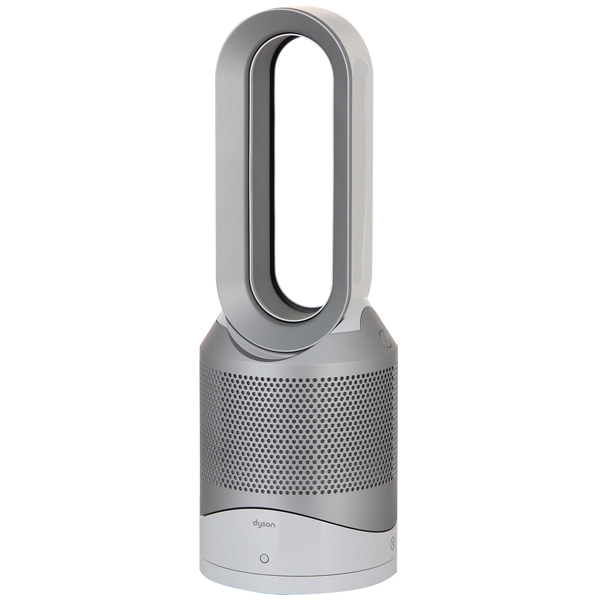
It is noteworthy fanless design and the presence of heated air, as well as a magnetic console that is attached to the iron surface of the cleaner.
Among the minuses, it can be noted that the manufacturer does not disclose the rate of cleaning - CADR. And judging by the user feedback, device performance is not as high as that of specialized cleaners. On the other hand, it is the only cleaner that also works as a heater. Also, many may be confused by the high price - about 35 thousand rubles. But here everyone decides for himself.
Another interesting model is the air purifier-disinfectant Tion Clever. It is not in our range, but it is widely distributed in the market.

Domestic company Tion is better known as a manufacturer of home ventilation. Nevertheless, in its assortment there is a classic climate technology. The same Clever is remarkable primarily because it combines most of the cleaning technologies. True, the price is also corresponding - 30 thousand rubles.
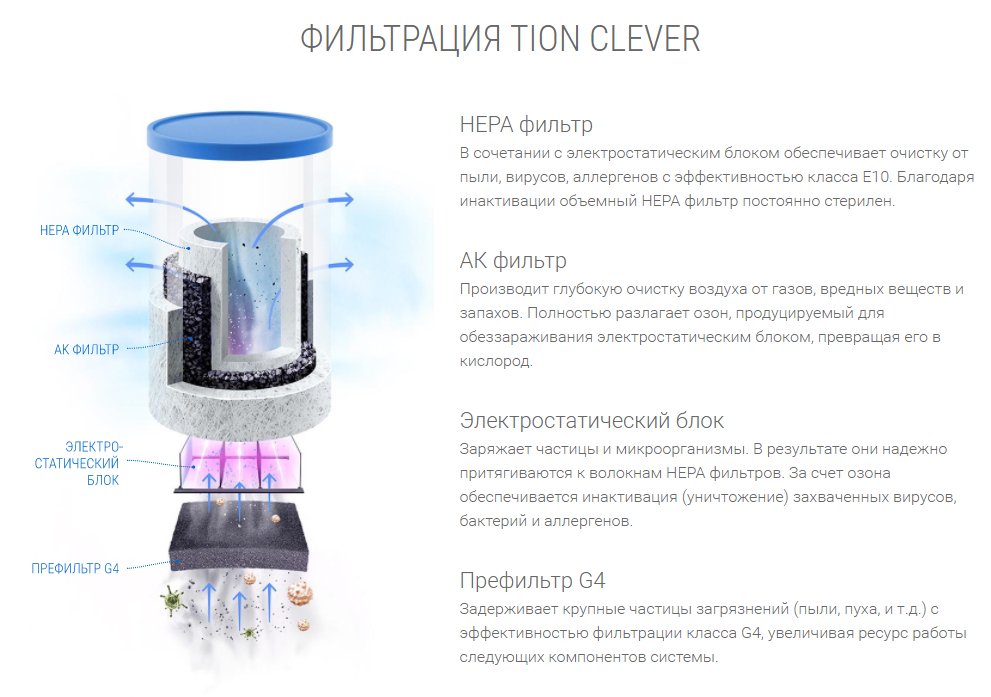
If the budget is limited, you can stop at a simple model with an electrostatic filter. At the same time, it is important to understand that such a cleaner will have a low productivity, but it will be quite enough to trap coarse dust.
The most efficient air purifiers are equipped with HEPA-filters of a class not lower than H13. At the same time, the filters themselves are consumables and are expensive.
If you need an air humidification system, then there are combined "air washers" that work both as a cleaner and as a humidifier. Alas, without a HEPA filter, they clean the air less efficiently, although they are cheaper to maintain due to the lack of replaceable elements.
Photocatalytic filters seem to be the most promising development at the moment, since they capture small contaminants and do not require the purchase of consumables. However, the real effectiveness of this technology is still in question. Well, let's wait until new research results or upgraded versions with guaranteed effectiveness appear.

Mold spores “caught” by a HEPA filter (illustration by scientific photographer Stefan Diller)
Residents of megalopolises, where motor transport and industry determine the “ecology”, can be said about the need for air purification. There are a number of studies that talk about the role of fine particles in the development of degenerative brain disorders, including Alzheimer's and Parkinson's. According to MIT, about 200 thousand people die every year because of air pollution in the United States. The various diseases associated with seasonal allergies, allergies to dust (more precisely, to dust mites) and mold are aloof. To solve these problems and need air purifiers. However, "not all yogurts are equally beneficial." Let's start with the filter types.
Filters are of several types :
- mechanical (coarse filter) - to trap large particles;
- absorption (coal) - to capture odors and toxins;
- electrostatic (ionizing air and pollution attracting to itself);
- HEPA (to capture even the smallest particles, including allergens);
- photocatalytic (ultraviolet), designed to disinfect the air, as well as oxidize harmful compounds to carbon dioxide and water.
Base case
The easiest way to clean is to run air through a coarse filter and a carbon filter. Thanks to this scheme, it is possible to get rid of unpleasant odors and to remove from the air relatively large particles of contaminants such as fluff or animal hair. Such models are inexpensive, but there is no special effect from them - after all, all bacteria, allergens and small particles still remain unfiltered.
In some cases, an ultraviolet lamp is added to this cleaner, which works on the principle of quartz treatment, i.e. disinfects the air passing through it. But, alas, this solution is also a compromise, since a large stream of air cannot be effectively “processed” by ultraviolet in the short time it passes through the chamber with the radiator.
Electrostatic Cleaners
In these devices, the principle of cleaning is a little more complicated: the air is driven through the electrostatic chamber of the purifier, where contaminated particles are ionized and attracted to the plates with the opposite charge.

Electrostatic cleaner Maxwell MW-3603 PR . Productivity: 20 m3 / hour
The technology is relatively inexpensive and does not require the use of any replaceable filters. Unfortunately, such cleaners can not boast of high performance - otherwise, due to the volume of ozone formed on the plates, its concentration in the air will exceed the permissible level.
Agree, it would be strange to deal with one pollution, actively saturating the air with another. Therefore, this option is suitable for cleaning a small room, not subject to severe pollution.
HEPA: filter carefully
From the nuclear industry came to us a technology called HEPA. Contrary to popular belief, HEPA is not a trademark or a specific manufacturer, but an abbreviation of High Efficiency Particulate Arrestance (eng: high particle retention).
HEPA filters are made of an accordion material whose fibers are interwoven in a special way. Pollution is caught in three ways:
- Inertia: particles with a diameter of more than one micron enter the filter along with the air flow and cannot go around the obstacle. As a result of inertial motion, they get stuck in the filter.
- Diffusion: light and small particles (with a diameter of less than 0.1 μm) due to their chaotic motion are deposited on the filter fibers, while the rest of the air flow flows around the obstacle and cannot pick them up.
- Mesh: particles too large for diffusion and too small for inertia fly with the main stream. However, some of them still cling to the fibers of the fabric and remain. New particles cling to it, and so on. By the way, due to the “hooking” the filter can not lose its efficiency for a long time, because already “caught” particles help to catch new pollution.

Wikipedia illustration
The HEPA standard, in its broadest sense, has several filtering classes. The most common (and cheapest) of them is E10, and it implies the efficiency of particle capture as low as 85% (in fact, only inertia). Then comes E11 (efficiency 95%) and E12 (99.5%). In fact, the filters of the group from E10 to E12 are more correct to call not HEPA, but EPA, however, standards from different countries allow manufacturers to rotate such a focus with names. However, filters starting from E12 can already be recommended for purchase, as their efficiency is already at a sufficient height.
The next class of H13 is already fair HEPA and involves the collection of 99.95% of contamination. That is, almost everything is “caught”. Therefore, in high-quality air purifiers are just such filters.

Air cleaner Bork A501 . One of the most affordable Hepa H13 filter cleaners
A further increase in class does not make sense in living conditions, because class H14 implies efficiency of 99.995%, and the next group of ULPA, starting from class U15, efficiency of 99.9995%.
Without replaceable filters
No matter how effectively the HEPA filter works, it must be changed as often as the manufacturer indicates. As a rule - at least once a year. In addition, HEPA-filters are mostly disposable and cannot be simply washed with water. Given that they are not cheap, you can try to save money and at the same time solve the problem of air humidification. This class of devices like “air washing” will help.

Electrolux EHAW Moisturizer Cleaner - 7510D
Cleaning in this case occurs due to the passage of the air flow through water moistened discs or a cloud of small droplets, as a result of which the air is saturated with moisture and gives off large particles of pollution. Alas, the degree of purification by such a water filter is not very high (at the level of HEPA E10, not more), however, if you need a humidifier first of all, such a decision will be justified.
Photocatalytic
A few years ago, the promising direction of the so-called photocatalytic cleaners arose. In theory, everything was pretty bright - the air through a coarse filter enters the unit with a photocatalyst (titanium oxide), where under the influence of ultraviolet radiation harmful particles are oxidized and decompose.

It is believed that such a filter fights pollen, mold spores, gaseous pollution, bacteria, viruses and the like very well. Moreover, the effectiveness of such a cleaner does not depend on the degree of contamination of the filter, since dirt does not accumulate there.
However, at the moment, the effectiveness of this type of purification is also questionable, since photocatalysis is only on the outer surface of the filter, and a significant area of air purification requires an area of several square meters with an ultraviolet intensity of at least 20 W / m 2 . These conditions are not met in any of the photocatalytic air purifiers manufactured today.
Whether this technology is recognized to be effective and whether it will be upgraded - time will tell.
CADR
One of the important indicators of the operation of any air cleaner is the speed of air purification in the room (CADR), which is determined by the product of the filtration coefficient and the volume of air passed through the filters. Usually this indicator is indicated for several types of pollution and is accompanied by certificates from various research centers and associations.
Since we do not live in hermetically sealed, but in ventilated rooms, a good device must have time to clean the air before we breathe it. Therefore, it is considered that the cleaner within an hour should drive through its filters the entire volume of air in the room approximately 2-3 times. Accordingly, the recommended CADR for a room of 20 m2 and a ceiling of 2.7 m should not be below 100 m3 / h.
Interesting models
The selection of cleaners on the market is very wide, and we would like to recommend you a couple of interesting models. One of them - Dyson HP00 Pure Hot + Cool .

It is noteworthy fanless design and the presence of heated air, as well as a magnetic console that is attached to the iron surface of the cleaner.
Among the minuses, it can be noted that the manufacturer does not disclose the rate of cleaning - CADR. And judging by the user feedback, device performance is not as high as that of specialized cleaners. On the other hand, it is the only cleaner that also works as a heater. Also, many may be confused by the high price - about 35 thousand rubles. But here everyone decides for himself.
Another interesting model is the air purifier-disinfectant Tion Clever. It is not in our range, but it is widely distributed in the market.

Domestic company Tion is better known as a manufacturer of home ventilation. Nevertheless, in its assortment there is a classic climate technology. The same Clever is remarkable primarily because it combines most of the cleaning technologies. True, the price is also corresponding - 30 thousand rubles.

findings
If the budget is limited, you can stop at a simple model with an electrostatic filter. At the same time, it is important to understand that such a cleaner will have a low productivity, but it will be quite enough to trap coarse dust.
The most efficient air purifiers are equipped with HEPA-filters of a class not lower than H13. At the same time, the filters themselves are consumables and are expensive.
If you need an air humidification system, then there are combined "air washers" that work both as a cleaner and as a humidifier. Alas, without a HEPA filter, they clean the air less efficiently, although they are cheaper to maintain due to the lack of replaceable elements.
Photocatalytic filters seem to be the most promising development at the moment, since they capture small contaminants and do not require the purchase of consumables. However, the real effectiveness of this technology is still in question. Well, let's wait until new research results or upgraded versions with guaranteed effectiveness appear.
All Articles